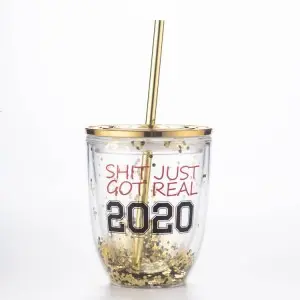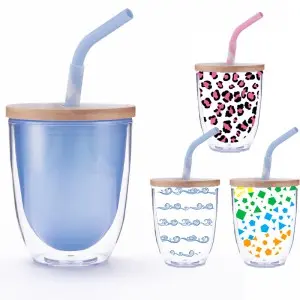With the accelerated pace of people’s lives, plastic water cups have become a common item in our daily lives. However, people have always had doubts about the safety of plastic water cups. When choosing a plastic water cup, what material should we pay attention to that is safer? The following will explain to you the common materials of plastic water cups and how to choose safe plastic water cups.
Common water cup materials——
1. Polystyrene (PS): PS is a light, transparent plastic material with good thermal insulation and impact resistance. However, PS easily releases harmful substances at high temperatures, so it is not suitable for long-term use.
2. High-density polyethylene (HDPE): HDPE is a tough, durable plastic material often used to make food storage containers and beverage bottles. However, under high temperatures and acidic environments, HDPE may release trace amounts of harmful substances.
3. Polycarbonate (PC): PC has excellent heat resistance, strength and transparency, and is widely used to make baby bottles, water cups, etc. However, PC may release harmful substances such as bisphenol A (BPA) at high temperatures, which may affect human health.
When choosing a plastic water cup, we need to pay attention to the following aspects:
1. Hardness: Hardness is an important indicator of the quality of plastic water cups. Generally speaking, water bottles with high hardness have strong pressure resistance, are not easily deformed, and have a longer service life.
2. Transparency: A water cup with high transparency allows people to clearly see the liquid in the cup, making it easy to use. At the same time, transparency also reflects the production process and quality of plastic water cups.
3. Weight: Weight is an important factor in measuring whether a plastic water bottle is light or not. The lightweight water bottle is easy to carry and suitable for outdoor activities and other occasions.
4. Brand and model: Water bottles from well-known brands usually have better quality assurance and after-sales service. When purchasing, it is recommended to choose the latest model from a brand with good reputation and reliable quality.
5. Purpose: Different usage occasions have different requirements for water cups. For example, when exercising outdoors, you may need a water bottle that is lightweight and resistant to falling; while in the office, you may pay more attention to the heat preservation performance of the water bottle.
When buying plastic water cups, we need to pay attention to the following points:
1. Try to choose materials that do not contain harmful substances such as BPA, such as Tritan, PP, etc.
2. Observe whether the transparency of the water cup is good and there are no obvious impurities and bubbles.
3. Check whether the workmanship of the water cup is fine and the edges are smooth and burr-free.
4. Pay attention to the sealing performance of the water cup to prevent liquid leakage.
5. Choose the appropriate capacity and style according to your own needs.
6. Pay attention to brand, model and other information, and choose brands and models with good reputation.
7. Try to choose water cups made of food-grade materials to ensure safety.
In daily use, we need to pay attention to the following points to care for and maintain our plastic water cups:
1. Cleaning: Clean the water cup promptly after use to avoid residues from breeding bacteria. When cleaning, you can wipe it gently with a soft cloth or sponge, and avoid using hard objects such as rough brushes.
2. Disinfection: You can use hot water or special disinfectant to disinfect the water cup to kill bacteria and viruses. However, be careful not to use irritating disinfectants to avoid harm to the human body.
3. Avoid contact with high temperatures: Try to avoid leaving plastic water bottles in high-temperature environments for long periods of time, such as in cars and in direct sunlight. High temperatures may cause the water cup to deform and release harmful substances.
4. Replacement: Plastic water cups have a certain service life and may age and wear out after long-term use. When cracks, deformation, etc. are found in the water cup, you should replace it with a new one in time.
5. Pay attention to storage: When using and storing plastic water cups, avoid friction or collision with other items to avoid scratches or damage. Keeping your water bottle clean and in good condition will help extend its life.
I hope the above information is helpful to you, please leave a message to communicate.
Post time: Oct-26-2023

